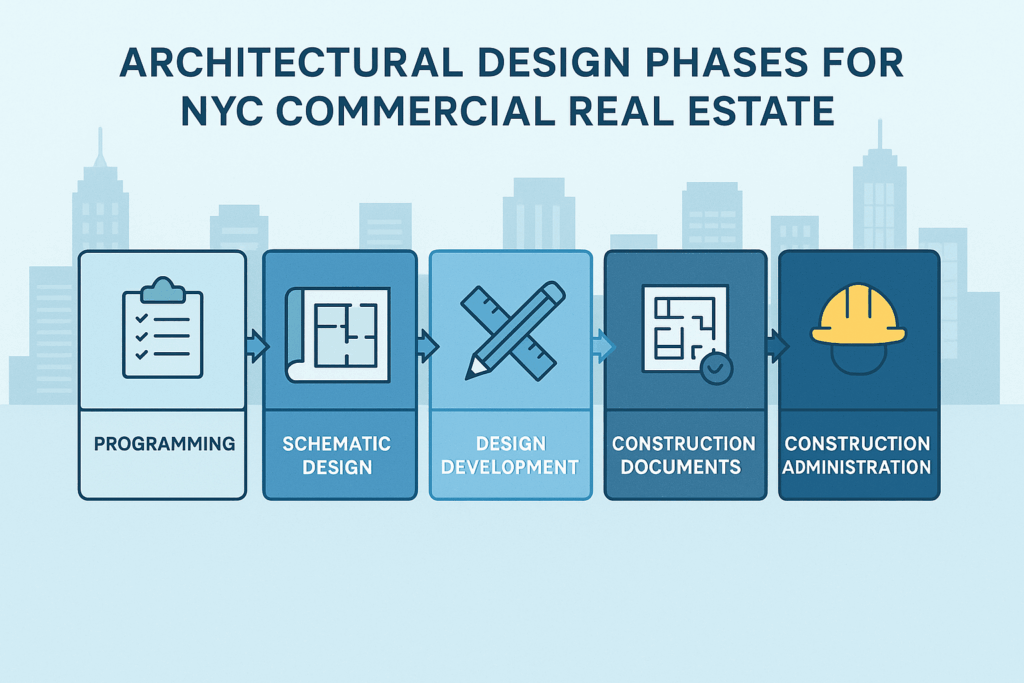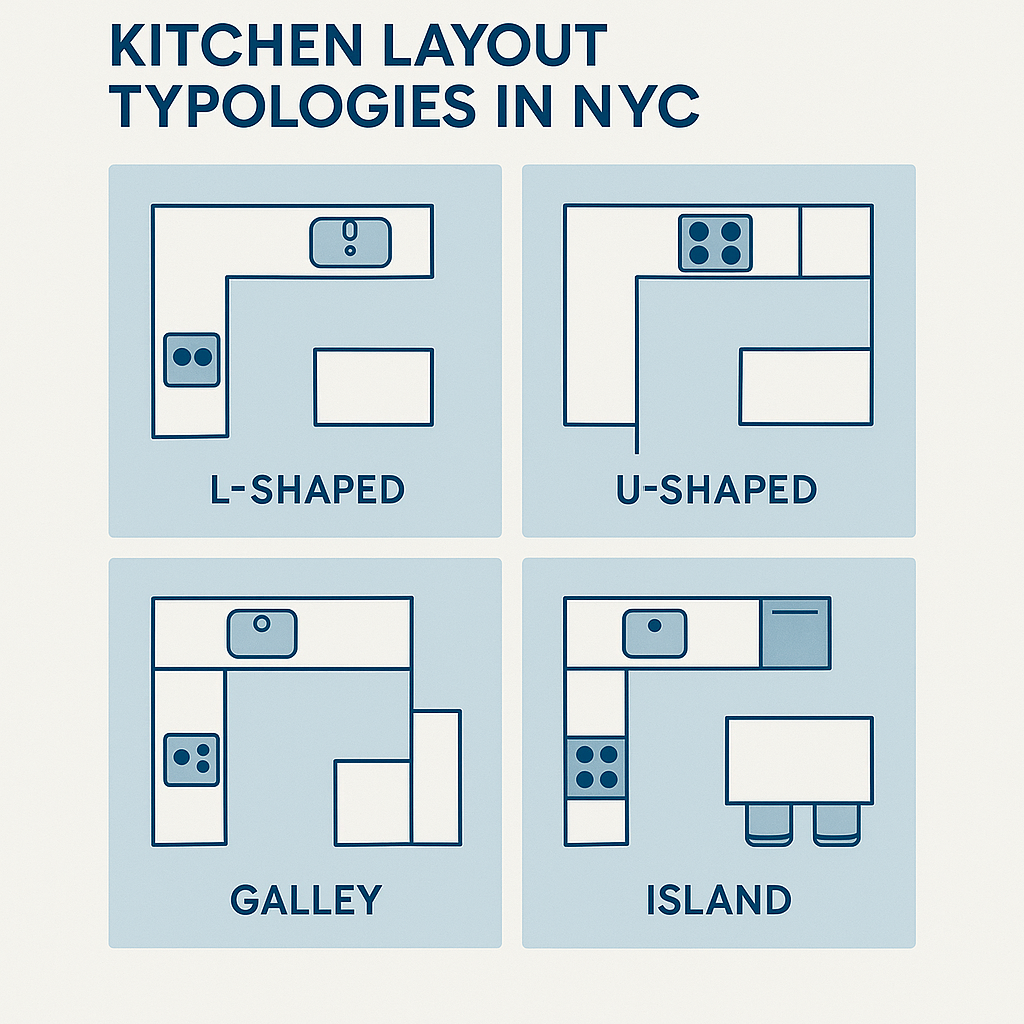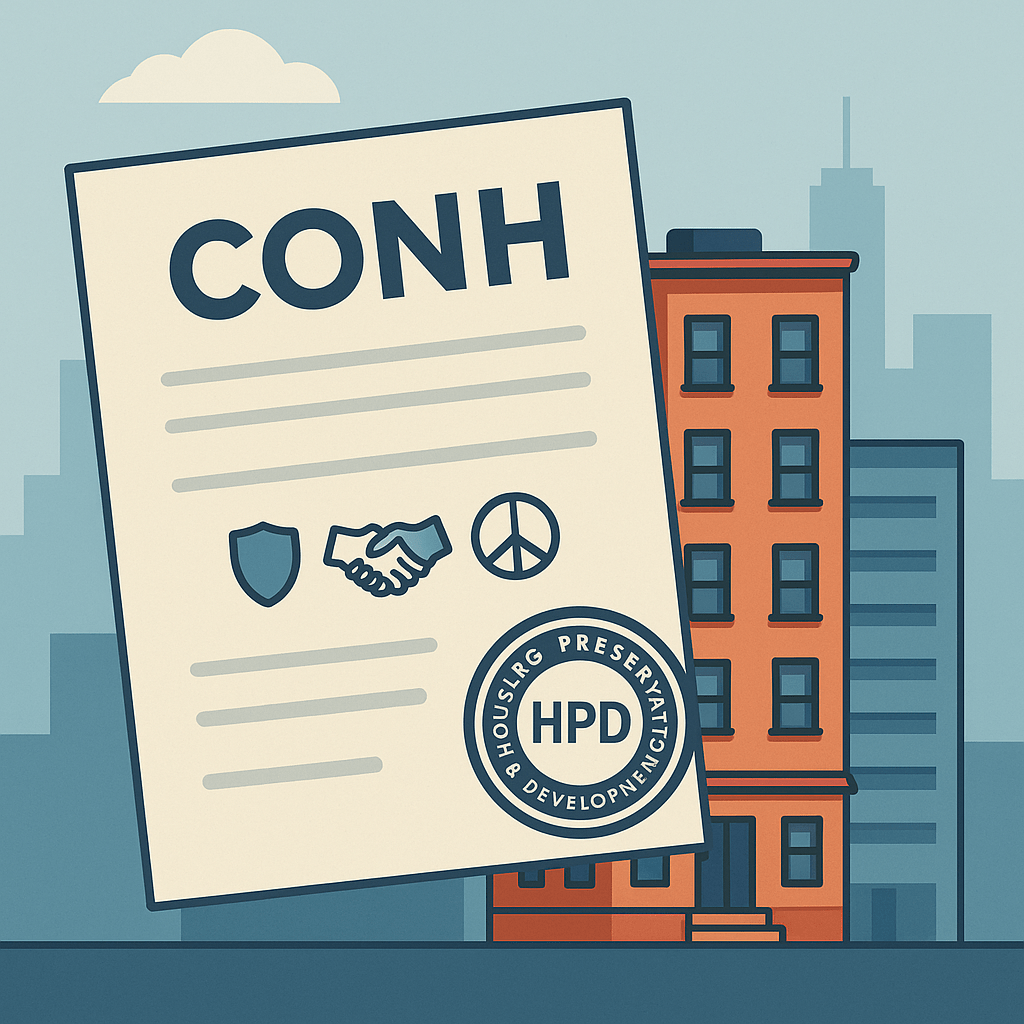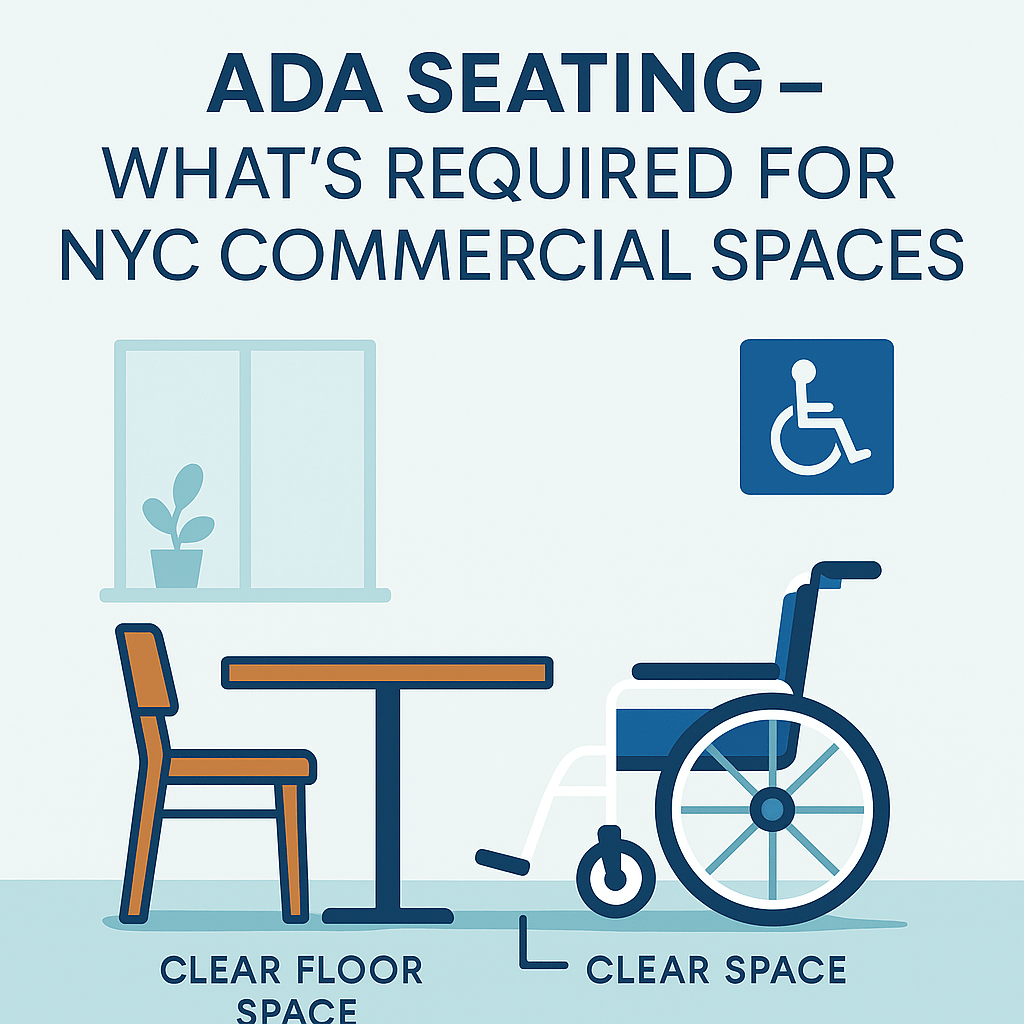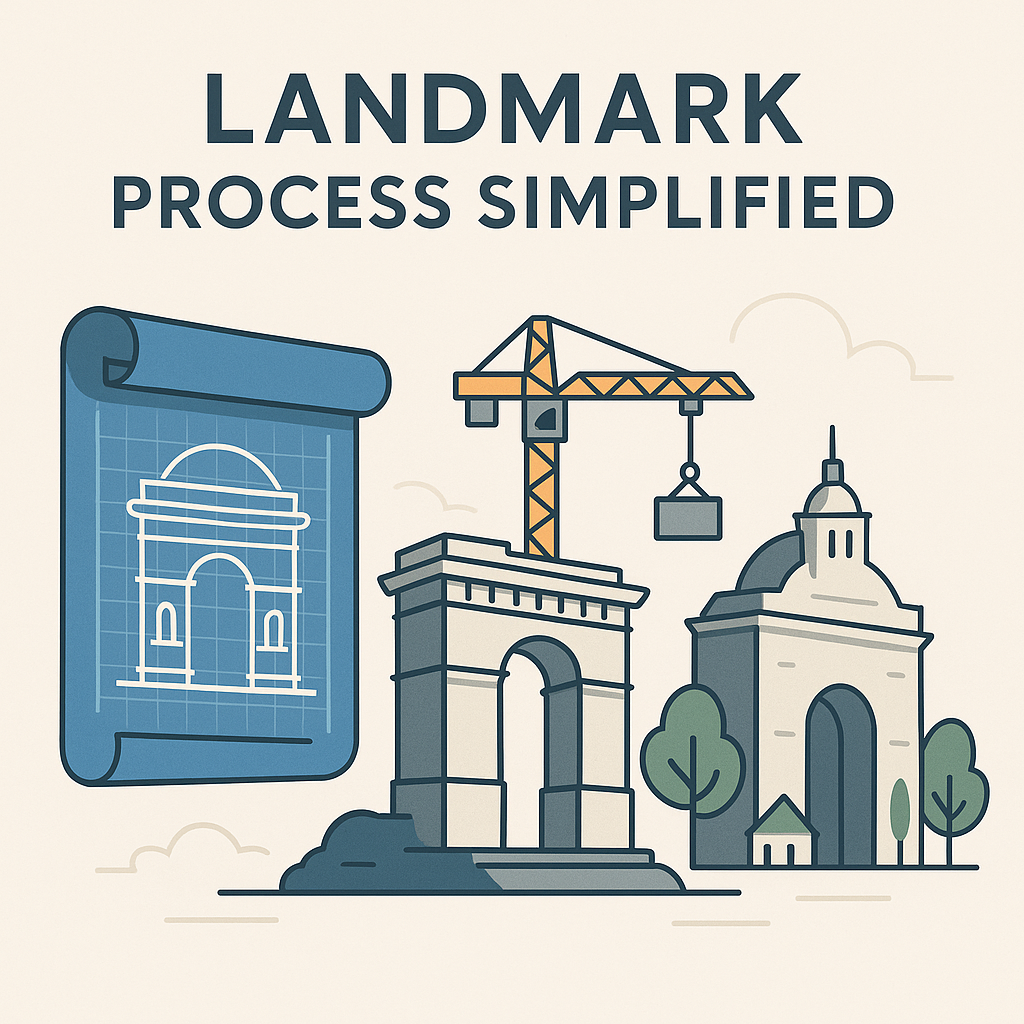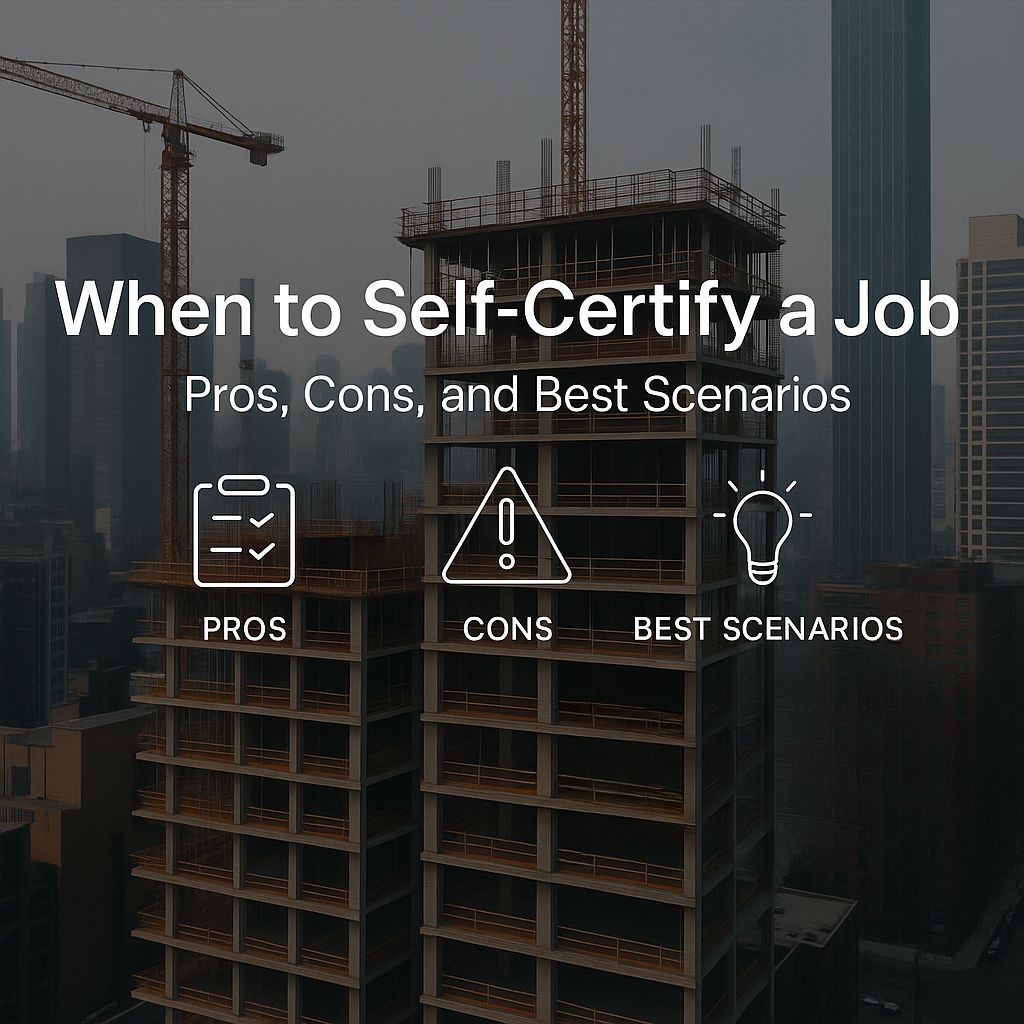Architectural Design Phases for NYC Commercial Real Estate: AIA Guidelines Explained
Commercial real estate development in New York City is a complex undertaking requiring careful planning and coordination. One effective way to navigate this complexity is by following a structured architectural design process from start to finish. According to the American Institute of Architects (AIA), an architectural project typically progresses through five primary phases. In practice, we include a preliminary Pre-Design phase as well, making it six key stages in total. Understanding these architectural design phases (or project stages) helps developers and property owners anticipate what’s next, keep projects on track, and manage expectations. A phased process also ensures that critical decisions are made in the proper sequence – from initial concept and feasibility all the way to construction and occupancy – which is especially important in NYC’s high-stakes development environment. In this guide, we explain each of the six major phases – Pre-Design, Schematic Design, Design Development, Construction Documents, Bidding & Negotiation, and Construction Administration – specifically tailored to commercial projects in NYC. For each phase, we outline what it includes (deliverables, typical timeline, stakeholder involvement) and what clients should expect in terms of coordination, approvals, and costs. By breaking the project into these manageable stages, everyone involved can stay aligned and ensure a successful outcome. Pre-Design Phase (Programming & Feasibility) Before any design drawings begin, the Pre-Design phase (also known as Programming or Feasibility Study) lays the groundwork for a successful project. This initial phase is all about information-gathering and defining the project’s goals, requirements, and constraints. The owner/developer and architect work together to establish the framework for the development – determining what will be built, where, and why. For a commercial project in NYC, Pre-Design often involves studying the site’s conditions and the project’s viability before committing to a design direction. During Pre-Design, the team will typically conduct feasibility analyses such as site studies and zoning investigations. In a city like New York, a thorough zoning analysis is critical at this stage to confirm what can be built on the site (allowable floor area, height, usage, etc.) under NYC’s complex zoning codes. The architect will also help the owner clarify the project program – essentially, the list of spaces and functions the building needs to accommodate (e.g. square footage of offices, retail areas, lobbies, etc.). Additionally, preliminary budget targets and timeline expectations are discussed so that everyone understands the financial and scheduling parameters from the outset. This phase may involve other due diligence tasks as well, like commissioning a land survey, reviewing any existing structures or environmental conditions on the site, and sometimes a pro forma or market analysis on the development’s economic feasibility. In short, Pre-Design is about uncovering all the key facts and constraints early on. Investing time in this planning stage will set the path for the entire project and help avoid costly surprises down the road. Pre-Design – What to Expect: Deliverables: Typically, a feasibility report or program document is produced, summarizing the project’s requirements and viability. This might include a site analysis report (documenting site conditions, zoning allowances, and any restrictions), a preliminary building program (list of desired spaces with square footages), and sometimes massing studies or test-fit diagrams to explore development options. The architect might also prepare a high-level project budget estimate or yield study, and a preliminary project schedule (though at this stage, timelines are rough). All this gives the owner a “go/no-go” basis for proceeding. Timeline: The Pre-Design phase can range from a few weeks to a few months, depending on the complexity of the project and how quickly information can be gathered. A straightforward interior fit-out might have a brief pre-design, whereas a large ground-up development (with site acquisitions, multiple stakeholders, etc.) could require extensive study. Stakeholders & Coordination: The owner (developer) and architect are the primary participants in Pre-Design. The owner provides their goals and constraints, while the architect leads research and analysis. Other professionals may be consulted as needed – for example, a surveyor to provide a land survey, a geotechnical engineer if soil tests are required, or a zoning/code consultant for tricky regulatory questions. In some cases, experienced developers handle parts of Pre-Design in-house, but they often still rely on architects for technical analyses (especially zoning in NYC). Early input from an attorney or land-use expert may occur if there are potential legal hurdles (like obtaining a variance). Overall, this phase is collaborative and often iterative: expect lots of questions and information exchange. Approvals: No formal government approvals are obtained during Pre-Design. This phase is about groundwork and planning. However, it should surface any special approvals the project will need later. For example, if a zoning variance, special permit, or Landmark Preservation Commission approval is required, identifying that in Pre-Design is crucial so that the project timeline can account for those procedures. Internally, the outcome of Pre-Design is typically a decision by the owner on whether to move forward with the project (and under what parameters). Costs: Pre-Design services are often contracted as an additional service outside the main architectural fee, or as a small initial portion of it. Some architecture firms may offer feasibility studies for a flat fee or as part of a proposal to win a project. In terms of effort, Pre-Design is relatively limited – often accounting for a very small percentage of the overall design work (sometimes on the order of 0–5% of total architectural fees). The owner might incur other direct costs at this stage, such as paying for a survey, site inspections (like environmental tests or hazardous materials checks on an existing building), or preliminary consulting reports. Being thorough in Pre-Design can save money later by catching red flags early. Once this phase is complete and the project is deemed feasible, the formal design work begins. Schematic Design (SD) Once the project’s parameters are defined, it moves into the Schematic Design phase. This is the first step of actual design work, where the architect translates the project requirements into an initial building design concept. In Schematic Design, the
Architectural Design Phases for NYC Commercial Real Estate: AIA Guidelines Explained Read More »

